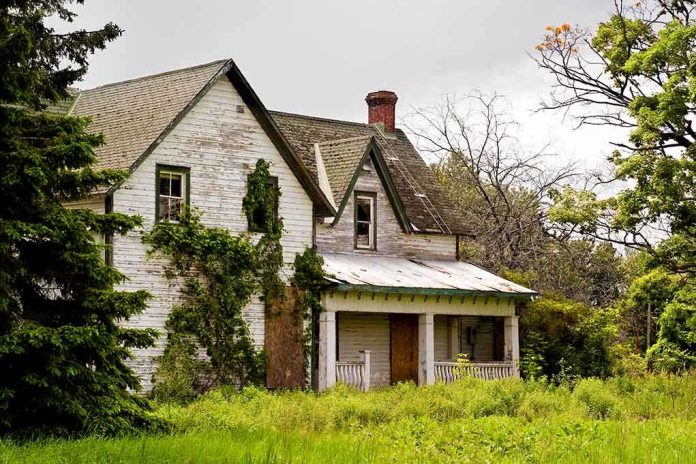
Record-breaking housing price cuts are sending shockwaves through half of America’s biggest cities, exposing the fallout of fiscal mismanagement and reckless policy, and leaving millions of families facing hard truths about their home values.
Story Snapshot
- Over half of America’s largest cities are seeing record home price cuts, with sellers in panic mode as values tumble.
- The sharpest declines hit Sun Belt boomtowns like Tampa, Austin, Miami, Orlando, and Dallas, where overbuilding and economic uncertainty collide.
- Midwest and Northeast markets remain resilient, highlighting deep regional divides and the dangers of one-size-fits-all policy responses.
- This is the first forecasted national home price decline since 2011, undermining past claims of endless housing growth.
Housing Market Upended: Sellers Slash Prices Amid Rising Inventory
In the summer of 2025, sellers across America’s Sun Belt are slashing prices at historic rates in a desperate attempt to attract buyers. Nearly 27.4% of all listings in the nation’s largest cities have seen price cuts, the highest figure ever recorded. This unprecedented correction is concentrated in cities that were once pandemic-era boomtowns—Tampa, Austin, Miami, Orlando, and Dallas—where a glut of new construction now meets waning demand. For families who bought into these markets at peak prices, the reversal is swift and alarming: negative equity, financial stress, and growing uncertainty about the future of their investments.
Midwest and Northeast cities like Cleveland and Hartford, by contrast, are experiencing modest price growth, with YoY gains of 4.7% and 4.5%, respectively. This stark regional divergence highlights the folly of blanket economic policies and the risks of ignoring local realities. Homebuilders in oversupplied regions are pulling back on new projects, while buyers, though enjoying greater bargaining power, remain squeezed by stubbornly high mortgage rates and ongoing affordability challenges. The resulting landscape is one of fractured opportunity and growing frustration, especially for those in hard-hit areas who feel failed by leaders promising stability and prosperity.
From Pandemic Boom to Bust: How We Got Here
The roots of this housing crisis stretch back to the pandemic years of 2020-2022, when artificially low interest rates and government stimulus fueled a buying frenzy—especially in low-tax, lightly regulated Sun Belt states. Builders raced to meet demand, adding record numbers of homes in markets with fewer land-use restrictions. However, as the Federal Reserve hiked rates in 2023-2024 to fight inflation, affordability collapsed and buyers evaporated. Compounding these pressures, states like Florida saw insurance costs and climate risks spike, further reducing demand. The result: a massive oversupply in the very places that once led the housing surge, now triggering panic selling and sharp price corrections.
Winners, Losers, and the Cost of Political Negligence
The main victims in this downturn are ordinary homeowners in overbuilt metros, many now facing negative equity and the threat of foreclosure. Homebuilders, who overextended in search of profit during the pandemic boom, must now contend with mounting unsold inventory and shrinking margins. Local governments in these regions face declining tax revenues, threatening essential services and public safety. Meanwhile, buyers who waited out the frenzy are positioned to negotiate, but still struggle with high borrowing costs—a direct consequence of inflationary spending and past policies that failed to prioritize long-term stability. In the Midwest and Northeast, however, limited housing supply and steady demand have insulated communities from the worst effects, proving the resilience of markets less exposed to speculative excess and reckless regulatory decisions.
Policy responses so far have been uneven. Some states are calling for mortgage relief or insurance reforms, but these efforts often come too late for families already underwater. Real estate platforms and analysts agree: this is not a uniform national crash, but a severe, regionally concentrated correction. Sensational claims of 60%+ declines are largely exaggerated, but for many families in affected cities, the pain is real and immediate. The crisis underscores the need for local control, smarter fiscal management, and a renewed respect for the conservative values—like individual responsibility and prudent governance—that historically made American communities strong.
Expert Insights: What Comes Next for American Homeowners?
Most mainstream analysts, including those from J.P. Morgan and Zillow, forecast only a modest national decline in home prices, with the most severe corrections limited to overbuilt Sun Belt metros. They emphasize that regional divergence is at record highs, and that strong labor markets and stricter lending standards make a repeat of the 2008 housing crash unlikely. However, if economic conditions worsen—such as a spike in unemployment or further interest rate hikes—the risk of broader contagion remains. Experts warn that political pressure will mount for sweeping reforms, but caution that heavy-handed, one-size-fits-all solutions could backfire, deepening divides and fueling further instability. For conservative Americans, the lesson is clear: vigilance against government overreach, fiscal recklessness, and policies that ignore local realities is more critical than ever.
As the dust settles, families in hard-hit cities will have to navigate a new era of uncertainty—one that demands accountability from policymakers and a renewed commitment to the principles that have long underpinned American prosperity and stability.
Sources:
US housing market outlook: J.P. Morgan
Housing Market Forecasts for the Rest of 2025: Keeping Current Matters













